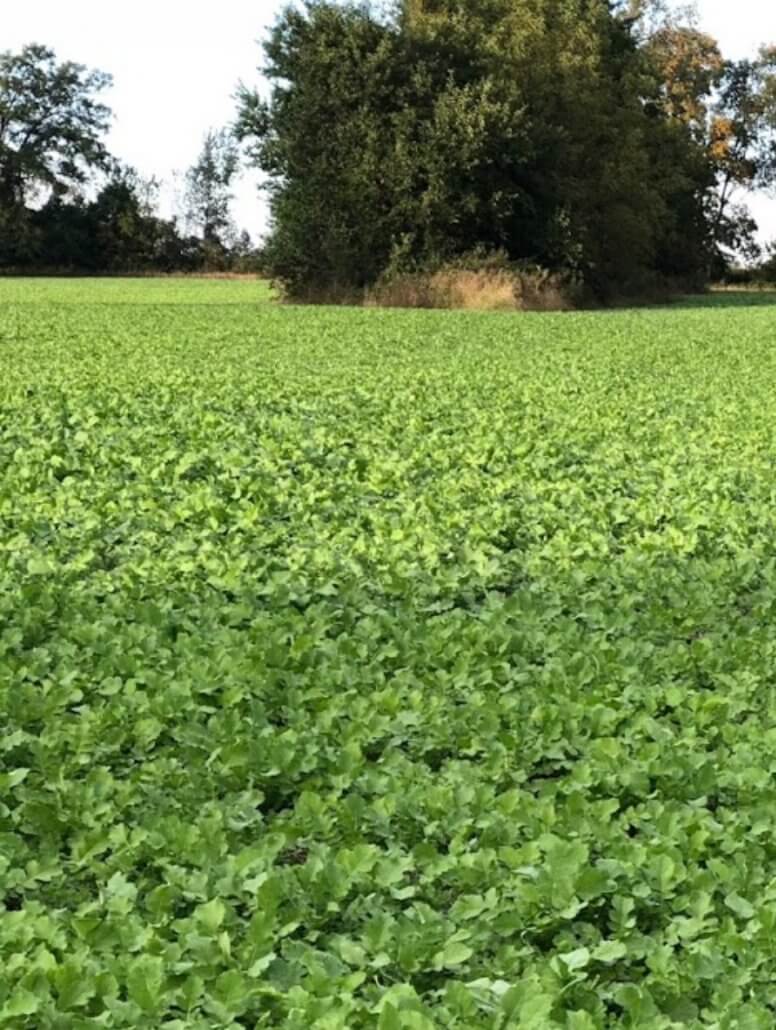I listened to an interesting and thought-provoking podcast by Professor Bill Johnson where he spoke about pairing cover crops with herbicides to combat weeds. I would like to summarize my main takeaway points and elaborate more on what professor Bill Johnson spoke about on his podcast.
What causes weed presence
Weed increases usually follow events of unfavorable conditions for crop production, such as droughts, floods, extended periods of extreme heat or cold, and soils that have been disturbed. This results in weeds outcompeting the crop as they are more resilient. The weeds will then grow uninhibited and produce a lot of seed which replenishes the soil weed seed bank causing a weed problem for many years to follow.
Field management practices that affect weed presence
Many field management practices result in weed presence, I will cover the ones that contribute the most below:
- Tillage: Tillage that results in soils being left bare creates open spaces for weeds to come in and compete for sunlight, moisture, and nutrients.
- Crops grown: Crops that do not produce good ground cover also result in open spaces for weeds to come in.
- Grazing management: Crops that are overgrazed result in soils being exposed, and therefore opportunity for weeds to come in.
- Herbicide management: The over-use of herbicide to control weeds can result in weeds building up resistance to herbicides.
Herbicide practicalities
Pre- or post-emergent herbicides
Both pre-emergent and post-emergent herbicides have a role to play in effectively controlling weeds. However, I believe the value of using pre-emergent herbicides to effectively control weeds is being underestimated. Pre-emergent herbicides have the following benefits:
- Allows the crop time to emerge and get ahead of the weeds.
- Lower weed population competing with the post-emergent crop.
- Lower weed population that needs to be controlled by post-emergent herbicide.
- Controls a broad range of species
When is the most effective time of year to use herbicides?
The most effective time of the year to apply herbicides would be in the autumn for the following reasons:
- Summer annual weeds usually go into seed as the temperature starts to cool off in the autumn and germinate again in the spring. Therefore, the best time to apply herbicides to annual weeds is in the autumn.
- In autumn, perennial weeds send food reserves to the roots of the plant to survive winter, therefore if herbicides are applied during autumn the plant will translocate the herbicide to the roots and the roots will be more susceptible to dying.
- In autumn, there are generally preferable growing conditions and good soil moisture levels. Herbicides are more effective when plants are actively growing.
Herbicide antagonism
Herbicide antagonism is when two or more herbicides are mixed to be applied, which results in one being less effective than what it would have been if it were to be applied on its own. Broadleaf herbicides usually impact the effectiveness of grass herbicides. I would therefore recommend applying herbicides separately, especially when applying grass herbicides.
Using cover crops to suppress weeds.
Cover crops help suppress weeds by emerging in a uniform manner that causes the weed to be outcompeted of space, moisture, sunlight, and nutrients. Cover crops are not only beneficial in weed control, but also help harvest carbon from the atmosphere, unlock nutrients in the soil, help break up compaction in the soil, reduce soil erosion, and if managed correctly provide food for your animals.
For cover crops to be most effective in suppressing weeds, ones with the highest biomass and quickest emergence should be chosen to eliminate space for weeds to emerge.
The best time to terminate cover crops is just before planting to ensure that weeds are not given time to establish and outcompete the crop.
For more reading on cover crops read Craig’s Cover crops – restoring soil
Conclusion
As stewards of the environment, it is our responsibility to limit chemical disturbance to only what is necessary. Through good field management, efficient herbicide usage, and the use of cover crops we can achieve this.
Sources
Accessed 18 June 2021


